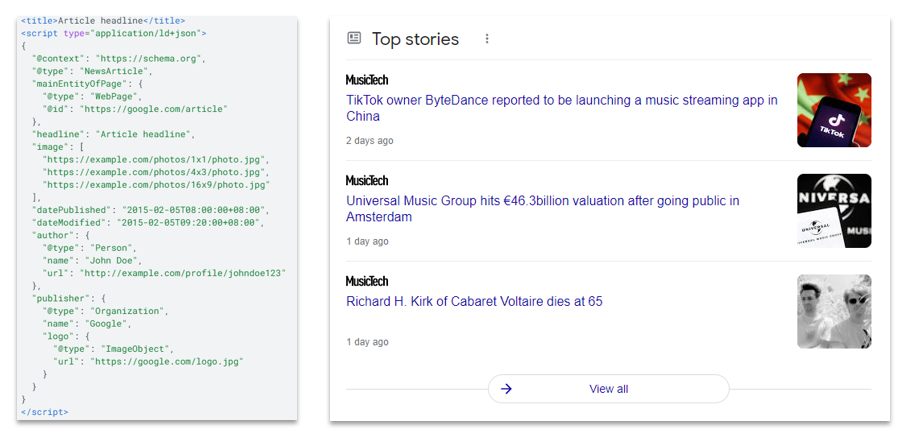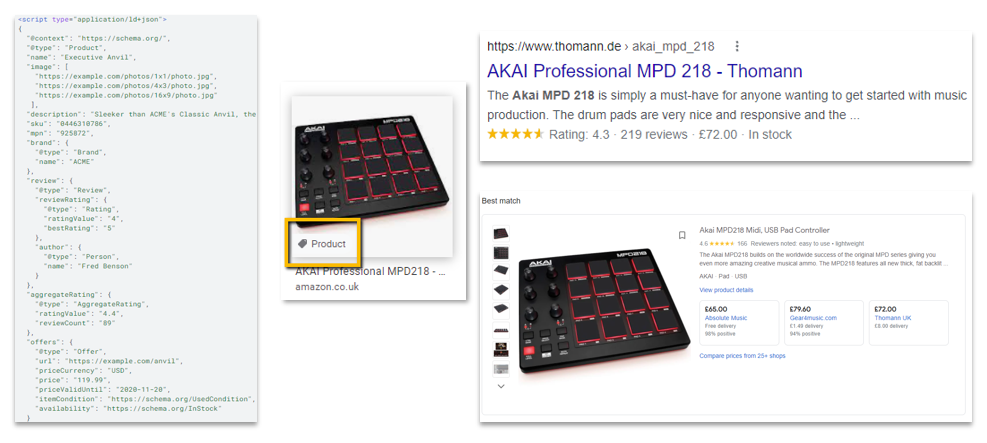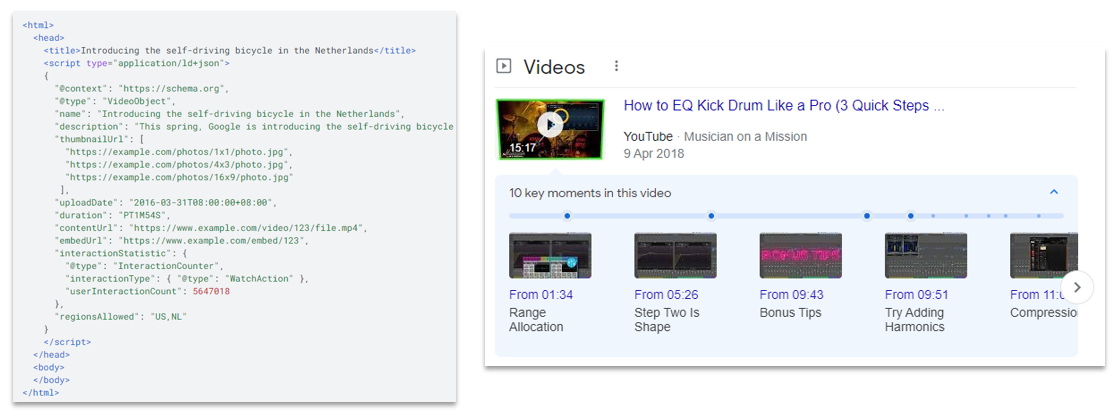Learn how to use schema to improve organic performance with our SEO Specialist, Joe. We'll cover structured data, why it was developed and how to use it.
In one of our latest webinars, our technical SEO Specialist, Joe Wheeler, discusses how to use schema and how it can improve the organic performance of your business’ website. Wondering, what is structured data? Or how your competitors are adding extra information on their products on Google? Then Joe’s expertise will help you answer your questions.
With his expert advice, we’ll outline what exactly structured data is and why it was developed. We’ll help you navigate the daunting world of structured data and how you can implement it to get the best out of your marketing strategy.
What Is Structured Data And What Are The Benefits?
According to Google, structured data is a standardised format that provides information on a page and classifies the page content. For example, on a recipe page, structured data will define what the ingredients are, the cooking time and temperature, and so on. Essentially, schema is a type of code that you put onto a webpage that gives search engines more information about that page.
The key benefits of implementing this are that when search engines understand your website and content better, they can take this additional information and use it to create rich snippets on results pages. If you’re unfamiliar with rich snippets, they’re snippets of content that feature on a search engine from a website to make the experience more engaging and useful. Product structured data, for instance, can show customers star ratings, key information and dimensions, which ultimately provide a more involved experience for searchers.
Using structured data will make your brand more visible to customers and you’ll stand out more compared to competitors. Due to the increased visibility, this will hopefully result in more clicks, producing more revenue. Certain types of structured data will also help you appear in different parts of the search engine results, including product structured data which will help you feature in organic shopping listings, and then there’s article data which will help you appear in top stories.
Most Popular Types Of Structured Data
There are various different types of rich snippets that structured data can help to form on search engines. These will help improve your organic performance because users can utilise this information to answer a query or find a certain product. Below are the most popular types of structured data.
Article Structured Data This is used on articles and blog posts and usually contains headlines, pictures, up-to-date information and date last modified to help users find the latest news on certain subjects. This can get your information featured on ‘top stories’; however, it must be used in conjunction with AMP (Accelerated Mobile Pages). It’ll also ensure that Google and other search engines index and rank your content correctly, putting your brand in front of users for higher visibility and conversions.

FAQ Structured Data If you have FAQs on your website, then this form of structured data will take these questions and answers and feature them on search result pages, allowing users to find the answers to their queries easily. It will also help improve the trustworthiness and reliability of your website if you’re seen as an expert who can clearly help users learn more about a certain topic, industry, service or product.

Product Structured Data If you have an e-commerce website, then this is the most critical structured data type to use. Since the data is so versatile, your products will feature in various different locations on Google, putting them in front of more customers. Plus, with information such as images, price, stock availability, reviews and average star rating, you can help users make an informed decision on what they’ll purchase.

Video Structured Data If your website features videos, then this type of markup provides search engines with more data so users can find information quicker. If you have an in-depth video on a certain topic, then structured data will allow search engines to highlight key moments to make information quicker and easier to locate.

Other types of structured data include:
- Recipe
- Events
- Job listings
- Organisation
- Sitelinks search box
- Q&As
- How to
How To Check Structured Data On Your Website
It can be difficult to know if you already have structured data available on your website, as some plug-ins can automatically add it. There are two main ways to check. The first is using Screaming Frog. For those who are unfamiliar, this tool helps you understand the technical SEO elements of your website and will pull important information, such as meta data and title tags, for you to check and correct. Screaming Frog will pull the structured data information for every URL and will flag errors, to give you a good idea of how to improve your site. The second method is using Google Search console. This isn’t as in-depth, but it is easier to use and will provide you with similar information, such as missing items or errors.
Implementing Structured Data
So how exactly do you implement structured data schemas? There are three different formats you can use for your website:
- JSON-LD – Google’s recommended format
- Microdata
- RDFa
Once you’ve established which format you will use, there are several different methods of implementing data schema.
Method One – Through HTML
Using the HTML code on your website offers the maximum control over the structured data that you implement. However, it is the most technical. So if working with code isn’t one of your strong suits, you may need to get the help of a developer to set it up properly, at least in the first instance. There are helpful websites out there, such as Merkle, that can aid you in writing HTML code and checking for errors.
Method Two – Plugins
There are several search engine optimisation plug-ins out there that can help optimise and implement schema, however some are only available for certain platforms, such as Yoast working primarily with WordPress. These are much easier to use if you’re not comfortable with code, but you will have less control over how your structured data looks on your website.
Method Three – Google Tag Manager
As a good compromise between the two, Google Tag Manager can create tags that contain the structured data code. The tag will then activate when Google crawls the page and then the data will be present on the website.
You can easily monitor structured data results through Google Search Console and you’ll be able to get a good idea of the impressions and clicks that your schema has brought to the website.
We hope we’ve provided you with the information you need on structured data and how to use schemas to improve organic performance. Want to learn more about digital marketing? Why not check out the rest of our webinars?








